Tanjore Painting Dhanavantri Vishnu INDIA Indian Thanjavur Antique Vintage
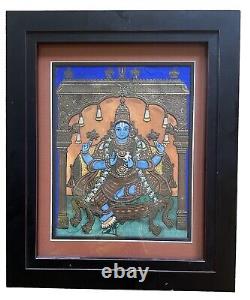

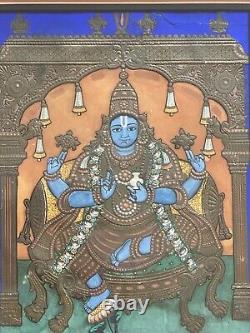

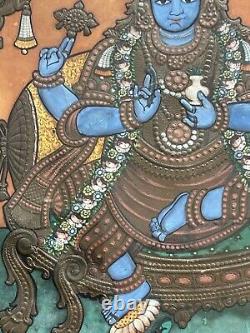

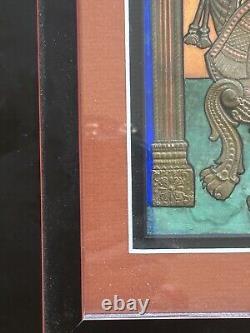

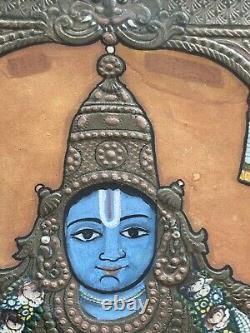
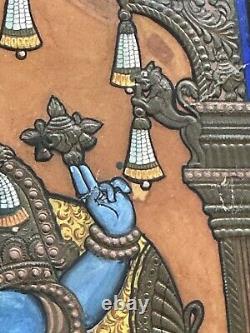


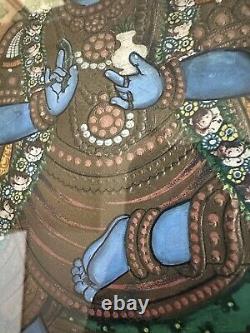

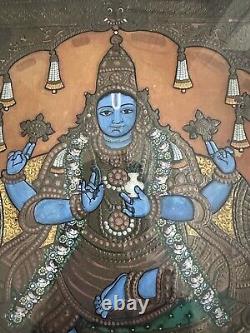
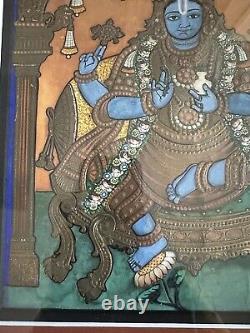

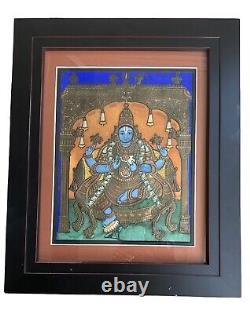
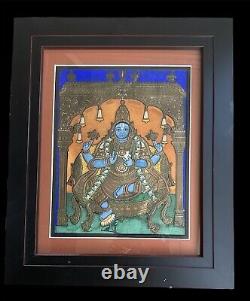


AUTHENTICITY GUARANTEE: We guarantee the authenticity of all our items Tanjore Painting Dhanawantri Vishnu. From Thanjavur (Tanjore), South India Approximately: framed - 17.25x14.25 inch. Sight - 13.5 x 9.5 inch Natural pigments, gesso on paper Framed in a wide, black frame.
, romanized: Dhanvantari) is the physician of the devas (Gods) in Hinduism and is regarded to be an avatar of Vishnu and is mentioned in the Puranas as the god of Ayurveda. During his incarnation on earth, Dhanvantri reigned as the King of Kashi, today locally referred to as Varanasi. According to the ancient Sanskrit work Vishnudharamottara, Dhanvantari is a handsome individual and is to usually be depicted with four hands, with one or two of them carrying a bowl of amrita, the elixir of immortality. Dhanvantari is depicted in a stark resemblance to Vishnu, with four hands, holding the shankhu, chakra, jalauka (leech), and a pot containing amrita. He is often shown with a leech in his hand rather than the scriptures, indicating the historical practice of bloodletting.
Devotees pray to Dhanvantari to seek his blessings for sound health for themselves and others on Dhanteras, two days before Deepavali. It is also celebrated as National Ayurveda Day in India, which was first observed in 2016.
Saturated with rich colors sourced from natural pigments and copper foil this rare classic Tanjore painting consists of a main figure of seated Dhanavantri. The main figure of Dhanavantri has a well rounded body, almond shaped eyes elaborate jewellery and traditionally draped silk clothes.
This formal composition of the popular deity is housed in an enclosure created by means of an arch adorned with elaborately decorated. The details on the clothes, jewelry, facial expressions, background and surrounding border are exquisite for a painting of this size. A breathtakingly beautiful painting, the impact in a darkened room is that of a glowing presence. Traditional Tanjore paintings are possessed as heirlooms. Tanjore painting is a major form of classical South Indian painting from the town of Thanjavur (anglicized as Tanjore) in Tamil Nadu, India.
The art form dates back to about 1600 AD, a period when the Nayakas of Thanjavur encouraged art-chiefly, classical dance and music-as well as literature, both in Telugu and Tamil. Tanjore paintings are known for their surface richness, vivid colors, compact composition and especially the glittering gold foils used to give the paintings their rich look. Essentially serving as devotional icons, the subjects of most paintings are Hindu gods, goddesses, and saints.
Episodes from Hindu tradition are drawn upon as elaborations of the main figure or figures placed in the central section of the picture. Tanjore paintings are panel paintings done on solid wood planks. In modern times, these paintings have become souvenirs of festive occasions in South India, pieces to decorate walls, and collectors' items for art lovers.


